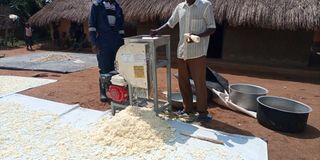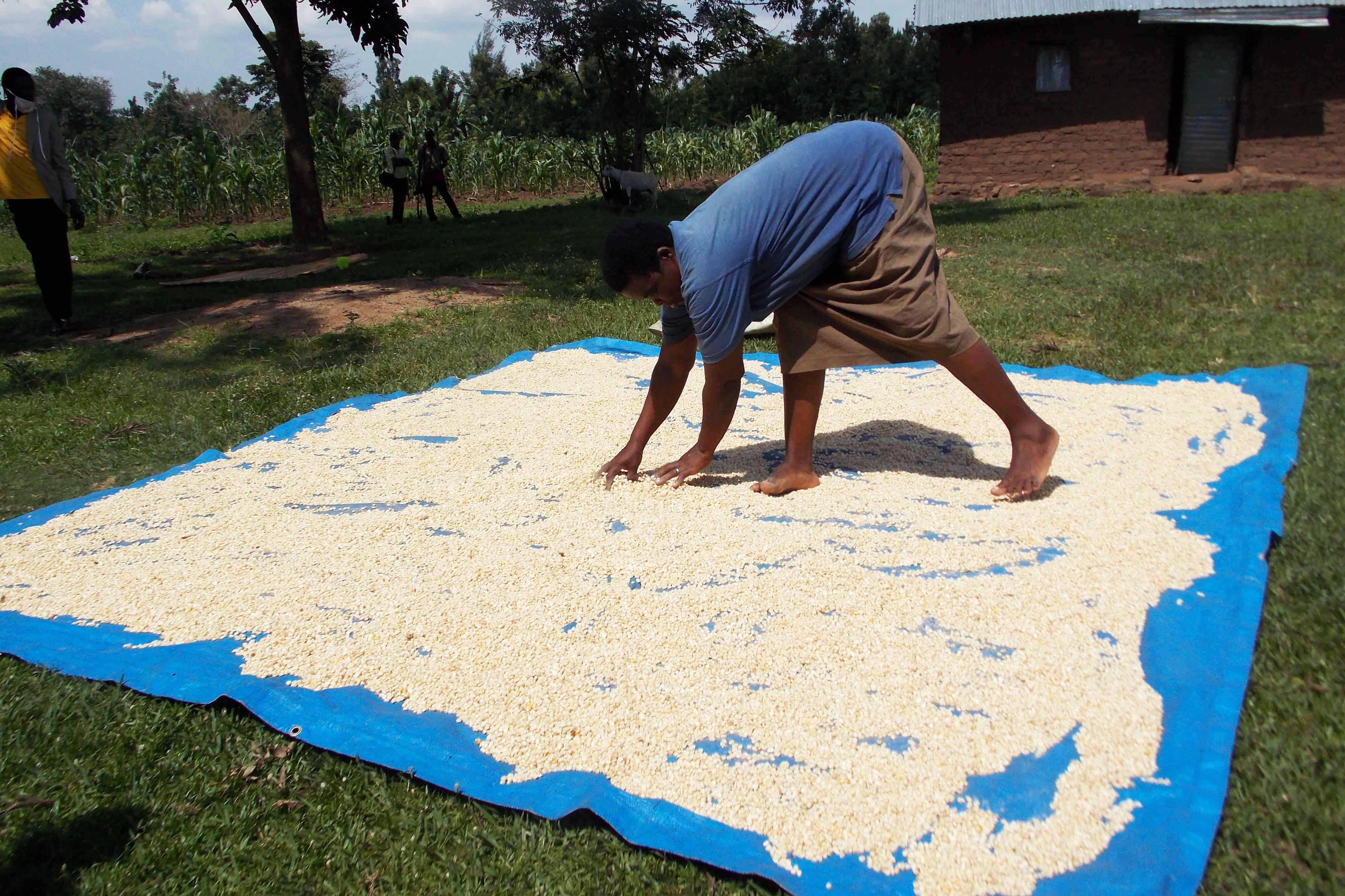Prime
Buliisa cassava farmers embrace value addition

Cassava farmers use a motorised chopping machine in Avogera Village, Buliisa District. PHOTO | ALEX TUMUHIMBISe
What you need to know:
- In the district, cassava has become the key ingredient in various products, which the farmers now sell to earn a living
Farmers in Buliisa District have started cultivating cassava on a large scale, seeking to tap into opportunities created by oil production in Bunyoro Sub-region.
In the district, cassava has become the key ingredient in various products, which the farmers now sell to earn a living.
Mr Farish Mubot, a member of the Nogm Okelo group comprising 30 cassava growers in Avogera Village, says they have moved away from traditional methods of cassava production for food and have shifted their focus to value addition, aiming to maximise profits.
“We are working with Living Earth to produce high quality cassava flour and chips. Our group of 30 people is actively growing cassava, and we have acquired chipping machines and silos for cassava processing,” Mr Mubot says.
He further explains that a kilogramme of cassava has increased from Shs2,500 to Shs3,500.
Ms Juliet Kawambe, another member of the group, expresses optimism about the impact of cassava value addition on their livelihoods.
“Previously, we faced challenges in cassava flour production, but now things have become easier because we have access to machines and storage facilities. It used to take us over 10 days to produce cassava flour, but now it can be done in less than three days,” Ms Kawambe says.
Mr Philemon Nganda, an agronomist at Living Earth Uganda, emphasises how the provision of cassava chipping machines and silos has significantly reduced post-harvest losses in the production chain.
“The use of silos and cassava chipping machines has helped the group members minimise post-harvest losses. They can sell the cassava flour when market prices are favourable,” Mr Nganda said.
He adds that the utilisation of new technology saves time and brings higher returns on investment.
“Previously, people would harvest their crops and follow traditional local methods of fermenting for three days and drying for 10 days. But with the new chopping machines, it takes them only three days with sufficient sunshine. This not only saves time but also helps generate more income, which can be reinvested in other crop production,” Mr Nganda explains.
Mr Christopher Ocowun, the public relations coordinator for TotalEnergies Uganda, states that the oil company has supported eight groups, each comprising 30 members, under their livelihood restoration initiatives.
Intervention
“Some individuals decided to grow cassava in large quantities, with some cultivating up to 20 acres. Since they couldn’t consume all the cassava, we decided to assist them in adding value, packaging, and targeting high-value markets. We have organised these farmers into cooperatives and provided them with machines to enhance cassava value addition,” Mr Ocowun explains. Mr Peter Kenneth Bintu, the enterprise development officer at the Petroleum Authority of Uganda, says local farmers have received support in the form of machinery and logistical assistance to add value to cassava, enabling them to earn higher profits and penetrate the market associated with oil-related economic activities.
“In collaboration with various partners, we facilitated the formation of associations and provided machines to help them add value to cassava. Additionally, we have been imparting business skills to ensure their success,” Mr Bintu says.




